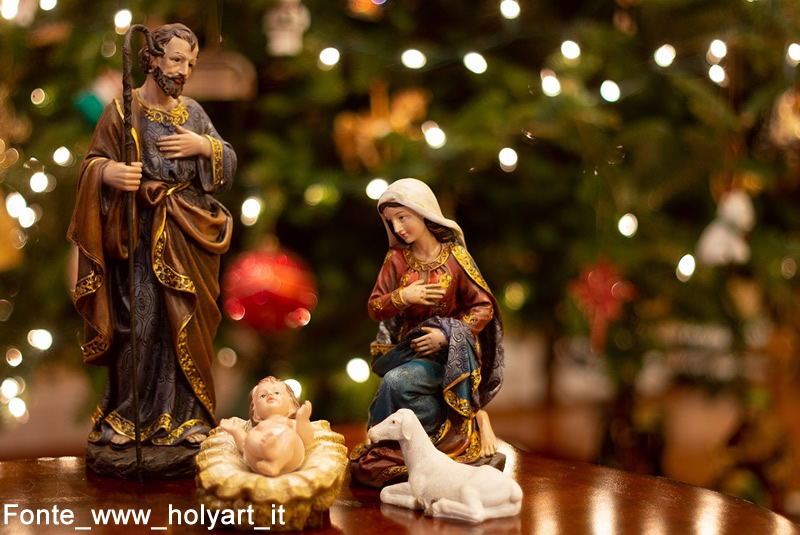
By making the manger this Christmas, we can evocatively express some fundamental truths of our faith. Francis of Assisi started this tradition in Greccio eight hundred years ago, beautifully portraying the closeness of the Incarnate God who became one with humanity and walks alongside us. Indeed, “with the simplicity of that sign, Saint Francis carried out a great work of evangelization”[1].
«Thanks to St Francis, the Christian people were able to perceive that at Christmas God truly became the “Emmanuel,” the God-with-us from whom no barrier nor any distance can separate us. Thus, in that Child, God became close to each one of us, so close that we are able to speak intimately to him and engage in a trusting relationship of deep affection with him, just as we do with any newborn baby»[2].
In that humble manger, nestled between the ox and the donkey, Francis of Assisi invites all to “feel” and “touch” the nearness, poverty, and tenderness of the Child Jesus who has placed “his dwelling among us” (Jn 1:14). “God appears as a child, for us to take into our arms. Beneath weakness and frailty, he conceals his power” (Ads 8). Indeed, “in the child Jesus, God made himself dependent, in need of human love.”[3]
Pope Francis acknowledges the evocative power of the Christmas crèche, which “helps us to imagine the scene. It touches our hearts and makes us enter into salvation history” (AdS 3). Often, it incorporates characters and elements from various cultural contexts where it is displayed, allowing observers to feel like “contemporaries of the event” and experience it as vivid and real.
The manger can serve, for example, to express that we are part of a big cosmic family and that we must break down barriers and prejudices. We utilize “the most diverse materials” (AdS 1), thus showing that no one should be excluded. Often, we “include the ruins of ancient houses or buildings” which serve as “visible signs of fallen humanity” (AdS 4) and simultaneously encourage us to recognize Jesus as the Savior who has come “to heal and rebuild, to restore the world and our lives” (AdS 4).
The presence of shepherds, beggars, and other humble individuals reminds us that “it is the humble and the poor who greet the event of the Incarnation” (AdS 5), while “we see Herod’s palace in the background, closed and deaf to the tidings of joy” (AdS 6).
Seeing those humble characters from diverse professions, we are also invited to embrace the mystique of ordinary life, which focuses on everyday relationships, grows “through small gestures,” and encourages us “to accomplish ordinary actions in an extraordinary way” (GE 17). Many “unknown or forgotten” individuals have embodied this style of holiness (GE 12).
In celebrating the nativity scene at Greccio, Francis conveys some of his profound beliefs and invites everyone to personally experience the mystery of Christ’s birth, transcending any formal celebration of it. Welcoming his invitation, let us joyfully and creatively celebrate this year the mystery of Christmas, so that we can see the starry sky in the darkness of night.
Martín Carbajo-Núñez, OFM
[1] Francis, «Admirabile signum. Apostolic Letter» (Dec. 1, 2019), 3. Part of these paragraphs are taken from this recent publication, already available in six languages: Carbajo-Núñez Martín, Celebrating life: The Rule and Christmas at Greccio (1223-2023), 2nd edition, Tau Publishing, Phoenix (AZ) 2023.
[2] Benedict XVI, «General audience» (Dec. 23, 2009)
[3] Benedict XVI, « Homily during midnight mass of the Nativity» (Dec. 24, 2011).

Nessun commento